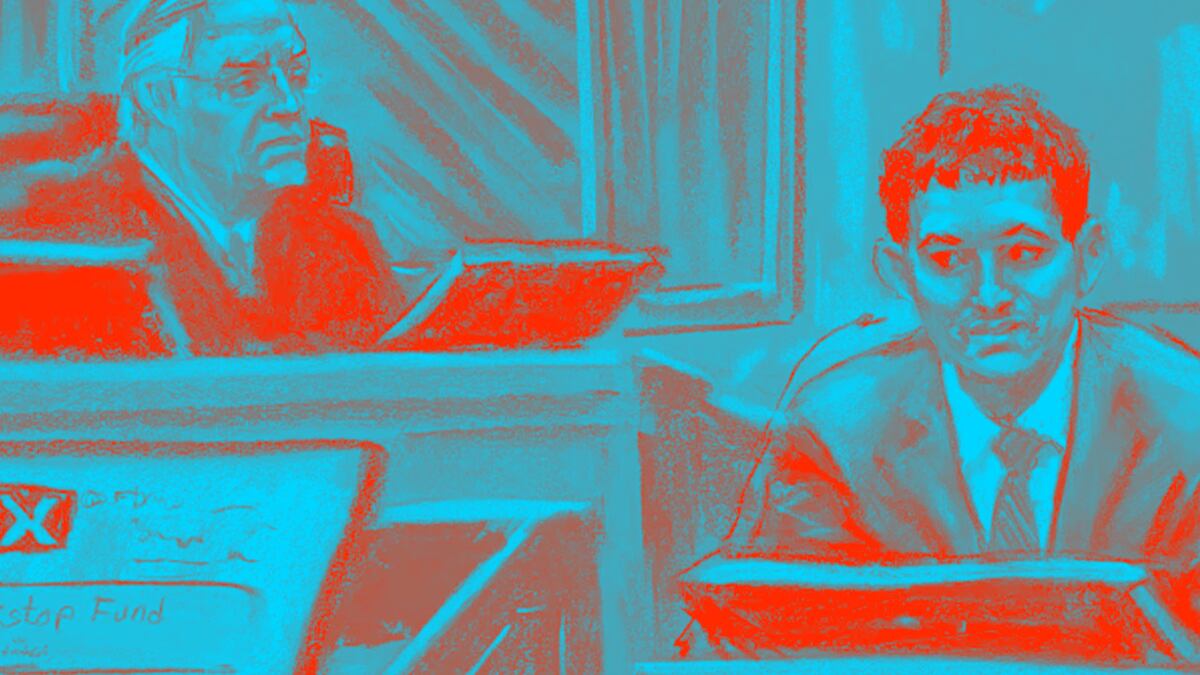- Bankman-Fried was found guilty on all seven charges of fraud and conspiracy.
- The jury deliberated for less than three hours before reaching their verdict in the month-long trial.
- The crypto founder's charges carry a maximum sentence of 110 years in prison.
A jury found FTX founder Sam Bankman-Fried guilty of all seven charges of fraud and conspiracy, exactly one year after publication of the exposé that brought down his crypto empire.
Sentencing has not yet been announced but is scheduled for March 28, with the 31-year-old entrepreneur facing a maximum of 110 years in prison.
It took jurors less than five hours to reach a verdict, a sign of the overwhelming evidence marshaled by federal prosecutors.
“Sam Bankman-Fried perpetrated one of the biggest financial frauds in American history,” said Damian Williams, the top federal prosecutor in New York, outside the courthouse after the verdict was rendered. “The cryptocurrency industry might be new, players like Sam Bankman-Fried might be new. But this kind of fraud, this kind of corruption, is old as time.”
Williams added that “It’s also a message. It’s a warning, this case. To every single fraudster out there, who thinks that they’re untouchable. That their crimes are too complex for us to catch, or that they’re too powerful for us to prosecute. Or that they could try to talk their way out of it when they get caught.”
According to a statement from Mark S. Cohen, Bankman-Fried’s lawyer, ”We respect the jury’s decision. But we are very disappointed with the result. Mr. Bankman-Fried maintains his innocence and will continue to vigorously fight the charges against him.”
Bankman-Fried’s father, Joe Bankman, sat with his head in his hands while the verdict was read. After jurors were polled — the verdict was unanimous — Bankman-Fried’s mother, Barbara Fried, cried quietly. Both parents gripped each others’ hands throughout.
Bankman-Fried’s second trial for violating campaign finance laws is scheduled for March 11, according to Judge Lewis Kaplan.
The background
On Nov. 2, 2022, CoinDesk published a story based on a leaked balance sheet from Alameda Research, the crypto trading firm Bankman-Fried founded in 2017. It suggested his crypto empire was built on a house of cards, and set off a series of events that culminated in FTX declaring bankruptcy just a little more than a week later. Bankman-Fried stepped down as CEO and handed the company to John J. Ray, a bankruptcy expert that led Enron through its restructuring almost 20 years earlier.
Bankman-Fried then embarked on a whirlwind media tour in which he tried to explain how FTX had somehow lost billions in customer deposits.
Federal prosecutors were not convinced: in December, they accused Bankman-Fried of stealing billions in FTX customer deposits and spending the money on venture investments, luxury real estate, political donations, and more.
After his arrest in the Bahamas, Bankman-Fried was extradited to the U.S. He was released on a $250 million bond and spent much of 2023 under house arrest at his parent’s $4 million California home.
But US district court Judge Lewis Kaplan revoked Bankman-Fried’s bail in August after finding the former billionaire had tried to intimidate a witness — Caroline Ellison, his ex-girlfriend and Alameda’s former CEO — by leaking a copy of her diary to The New York Times.
The trial
From the trial’s earliest days, Bankman-Fried’s legal team, led by former prosecutor Mark Cohen, seemed overmatched.
The government produced a stream of damaging witnesses that included former customers, lenders, and employees.
Most damning of all were three members of Bankman-Fried’s inner circle: Ellison, FTX co-founder and chief technology officer Gary Wang, and FTX head of engineering Nishad Singh.
Wang and Singh testified they built a “backdoor” in FTX software that let Alameda take FTX customer deposits without limit.
Ellison testified she had doctored Alameda balance sheets at Bankman-Fried’s request in order to dupe would-be lenders.
The defence did little to damage their credibility. When it was time to put on a case of their own, the defence called only three witnesses: Bankman-Fried’s attorney in the Bahamas, a financial analyst, and finally, Bankman-Fried himself.
The last was a hail mary play that may have done more harm than good. When questioned by his own attorney, Bankman-Fried seemed poised. On cross-examination, however, he was evasive and made to answer for misleading public statements before and after FTX’s collapse, many of which were contradicted by documentary evidence and witness testimony.
UPDATE: Added quotes from Damian Williams and Mark S. Cohen.
This is a developing story and will be updated.
Aleks Gilbert is DL News’ New York-based DeFi Correspondent. Reach out to him with tips at aleks@dlnews.com.
